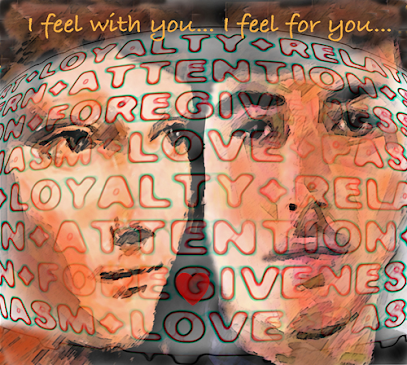LYRICAL LEPROSY- HUMANITIES
E. M. Cioran, in his A Short History of Decay, offers a searing diagnosis of the ideological maladies that afflict modernity, positing that the refusal to recognize the fungibility of ideas is the true catalyst of violence. “When we refuse to admit the interchangeable character of ideas, blood flows... firm resolves draw the dagger; fiery eyes presage slaughter.” In this aphoristic summation, Cioran identifies what he terms the Principle of Evil: “Every faith practices some form of terror,” a dictum that finds its apotheosis when society devolves into “an inferno of saviors.” Here, certitudes proliferate, and with them, the specter of fanaticism—a fundamental defect that impels individuals toward effectiveness, prophecy, and terror, a “lyrical leprosy” that infects, subjugates, and either annihilates or exalts the soul.
Cioran’s skepticism is not that of the political nihilist, who seeks to raze the edifice of the present in order to construct a utopia upon its ruins. Rather, he is a radical relativist and a values nihilist, one who repudiates all abstract normativities as pernicious falsehoods. For Cioran, “any arbitrary and fantastic aspiration is preferable to inflexible truths.” His cynicism is not merely corrosive but weaponized, reminiscent of Diogenes the Cynic—the Celestial Dog—whose sarcasm becomes a philosophical armamentarium. Cioran admires Diogenes precisely because he exposes the absurdity of dogma through ridicule and paradox, emptying Truth of its sanctity and thus neutralizing its capacity for terror.
Within this framework, Cioran delineates the central dilemma of mental hygiene: how does one insulate oneself from the contagion of false certainties and their destructive ideological sequelae? The disease of “lyrical leprosy” is not merely metaphorical; it is a psychic pollution that ensnares those who, lacking resistance, become acolytes of self-anointed prophets and saviors. These zealots, in turn, conscript others into the vortex of baseless faith and unthinking hostility toward dissenters. The paradox is that their values, though ethically suspect, acquire a veneer of legitimacy through their universalizable pretensions in humanity’s perennial quest for paradise. This, for Cioran, is the mechanism by which the Principle of Evil is enforced.
Yet, Cioran’s irony is mordant: if we were all to escape the gravitational pull of dogmatic certainties, we might “recover paradise”—a notion he immediately subverts, for paradise itself is one of those lethal certainties that has historically precipitated rivers of blood. The bitter implication is that life, denuded of certainties, is not only possible but preferable, even in the absence of the hollow promises of terrestrial or celestial paradises. Paradise, he insists, is the exclusive province of fanatics. The imperative, then, is to avoid ideological contamination at all costs if we are to maintain our mental integrity and avoid the peculiar guilt that arises from acting on doctrinaire conviction.
Nevertheless, caution is warranted when deploying terms such as “fanatic” and “fanaticism.” These are inherently pejorative and essentially contested concepts: no one willingly embraces the label except in jest, for the fanatic of one epoch is the hero or martyr of another. The protean nature of fanaticism is further complicated by the fact that its adherents often cloak their zealotry in the rhetoric of reason or benevolence, rendering the pathology invisible except during periodic eruptions of collective violence. Cioran’s hyperbolic style serves to unmask the latent violence of dogma, yet he acknowledges that fanaticism often masquerades as normalcy until it erupts in orgiastic destruction.
R. M. Hare’s analysis provides a useful lens through which to view this phenomenon: the fanatic is defined by an unwavering fidelity to a chosen Truth, irrespective of its abstraction or malevolence. Infected by the mania of “lyrical leprosy,” the fanatic is prepared not only to die for the Truth but to kill for it, sacrificing both self and other on the altar of absolute ideals. Cioran concurs: “The fanatic is incorruptible: if he kills for an idea, he can just as well get himself killed for one; in either case, tyrant or martyr, he is a monster.” The reflexivity of fanaticism—its willingness to destroy both the self and the other—renders it uniquely monstrous. Whether in the guise of the Nazi with a Jewish background or the patriotic martyr, the fanatic’s devotion to abstraction is both self-immolating and homicidal, a testament to the destructive potential of the “lyrical leprosy” that Cioran so pitilessly anatomizes.
-
Aphoristic – Expressed in a concise and memorable way; resembling a short, witty statement.
-
Apotheosis – The highest point in the development of something; a culmination or climax.
-
Edifice – A large, complex system or organization (originally a building).
-
Repudiate – To reject or disown; to refuse to accept.
-
Armamentarium – The complete equipment or resources available for a particular purpose.
-
Sequalae – Conditions or consequences resulting from a previous disease or event.
-
Acolyte – A devoted follower or assistant.
-
Vortex – A whirling mass or situation that draws everything within it.
-
Veneer – A superficially valuable or pleasing appearance.
-
Mordant – Having or showing a sharp or critical quality; biting.
-
Protean – Able to change frequently or easily; versatile.
-
Reflexivity – The quality of being directed or turned back on itself; self-referential.




Comments
Post a Comment